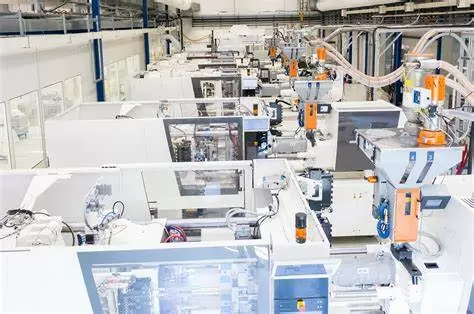Clean room injection molding is a specialized manufacturing process that allows for the production of delicate and implantable medical devices in the most sterile way possible. The injection molding process takes place in a cleanroom environment, which features a high level of atmospheric control through a High-efficiency particle air (HEPA) technology.
Cleanroom processes are executed with the aim of keeping your product free from contaminants such as dust or other particles. For plastic injection molding, ISO designates ISO 7 and ISO 8 cleanrooms. Let’s find out the differences.

Industries that use Cleanroom Operations
While cleanroom operations are primarily associated with medical operations, the following industries also require some type of cleanroom capabilities:
• Aerospace
• Food processing
• Optics
• Biotech
• Pharmaceutical
• Aerospace
ISO 7 and ISO 8 Cleanrooms
The International Standards Organization (ISO) designates the maximum number of particles that can be present in a cleanroom. These classifications are done based on the particle sizes and concentrations per cubic meters.
ISO 7 and ISO 8 cleanroom particle concentration ranges are shown below:
| Standard | Particles > 0.5 microns | Particles > 1 micron | Particles > 5 microns |
| ISO 7 | 352,000/m3 | 83,200/m3 | 2930/m3 |
| ISO 8 | 3,520,000/m3 | 832,000/m3 | 29,300m3 |
ISO 8 cleanrooms accommodate up to 10 times more the number/concentration of particles of ISO 7.
Both ISO 7 and ISO 8 cleanrooms can fulfill a number of application within the injection molding space. If the part to be manufactured has certain properties like susceptibility to impurities, it will require the more sterile (ISO 7) cleanrooms. The ISO 7 cleanroom operates a closed area injection molding achieved with hard walls. It is used for surgical implants, ophthalmology and invasive surgeries where foreign materials cannot be accommodated.

ISO 8 is less stringent than ISO 7. The boundary walls are achieved with movable curtains. It can be applied for regular surgeries, visceral operations and short term medical operations.
Criteria for Cleanroom Injection Molding Operations
• Coverage
All participants (engineers, operators and product engineers) must be fully clothed and concealed when entering the cleanroom. Participants should be covered from head to toe in full-body clothing, shoe covers and hair nets.
• Airflow
The use of HEPA machines to ensure that only pure and controlled number of air particles are circulated in the cleanroom. You can also calculate the airflow requirement using this formula – “Needed Airflow = Minimum airspeed * Surface area”
• Machines
Only electric and electronic machines should be deployed in cleanrooms to prevent airborne particles and contaminants that may be experienced with hydraulic machines.
• Packaging
Packaging materials that are prone to producing dust, debris and excess particles are not allowed in cleanrooms.
• Cleanroom size
Cleanrooms should only be as big as they need to be. Asides the huge setup costs, bigger cleanrooms will equally call for more technique in managing particle concentration and are more prone to external contamination.
• Build
Consider the material used to build the structure. Wood is commonly deployed for the cleanroom frame, while plastic or PVC foil is used for the walls
Cleanroom Injection Molding Applications
Both ISO 7 and ISO 8 cleanrooms find their general application in medical and surgical operations. High-precision surgical instruments that will come in contact with internal organs and delicate tissues must be clean, sterile and free of pollutants to prevent complications. Bio implants that will serve support or corrective actions inside of the human body must also be made in stringent cleanroom conditions for safety purposes.
When all contaminant-mitigating steps have been taken, an injection molding machine can be used to make some of the following:
• Surgical instruments
• Implants
• Emergency room apparatuses
• Fluid delivery containers and devices
• Cardiac products
• Interveinal housings, tubes and products
• Blood delivery housings
• Medical device housings
• Dental products
• Pediatric devices
• Medical imaging devices
Where You Can Carry Out Cleanroom Injection Molding
Cleanroom injection molding must be executed in a top injection molding facility with stringent quality control systems. At Firstpart, our injection molding operations and setups are capable of making medical devices that must conform to the ISO 7 and ISO 8 requirements. We also embody several Good Manufacturing Practices (GMP) in line with the FDA guidelines.

First Part Cleanroom Injection Molding Services in China
FirstPart offers high quality, thermoplastic injection molding service for all your plastic part projects in China. We also offer ISO 7 and ISO 8 cleanroom injection molding projects for medical, surgical and other delicate industrial manufacturing. Our engineers are always available to advice on the best processes, materials and design optimization to ensure cost-savings, quick turnaround and the production of parts that are 100 percent defect and issue free.










